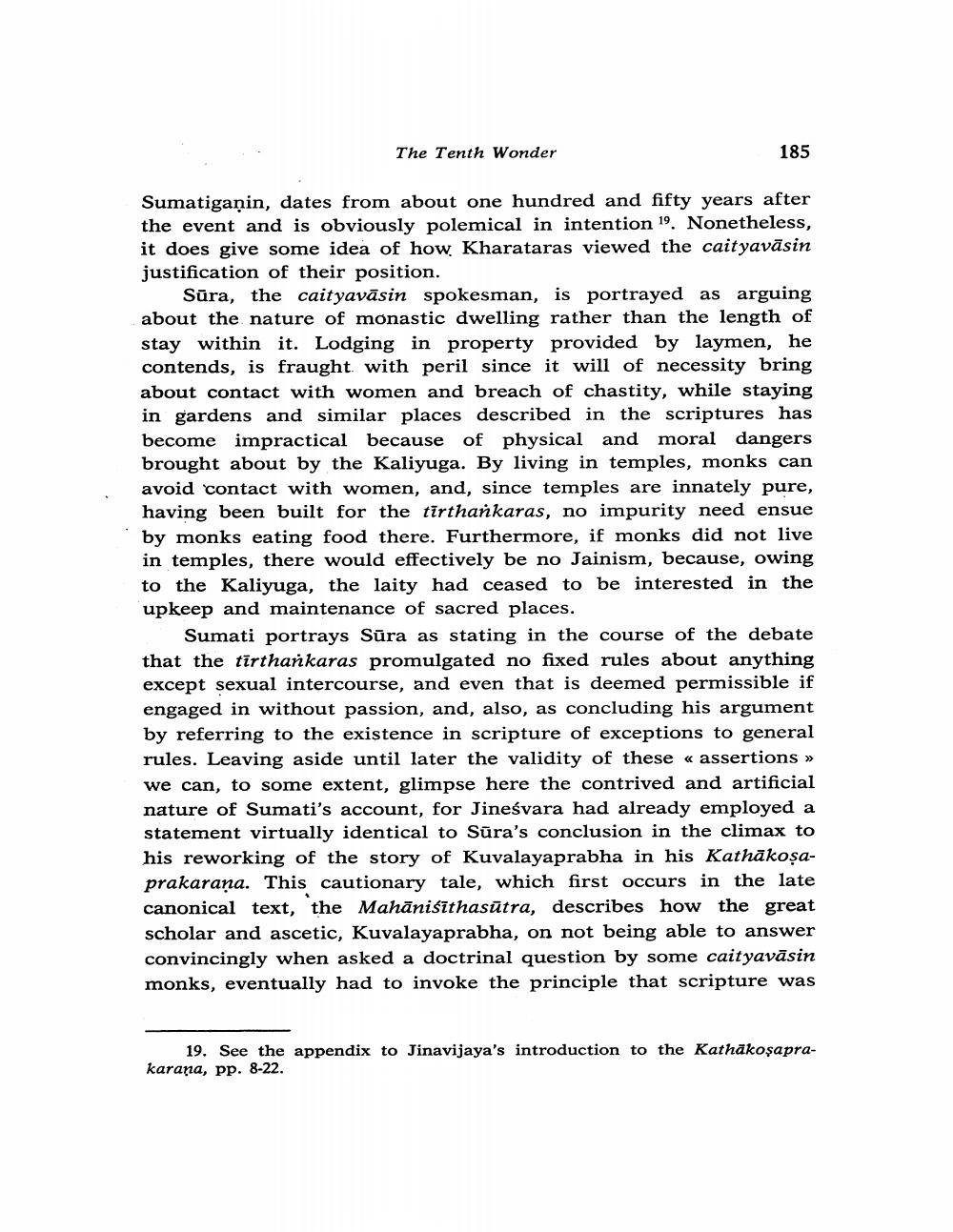________________
The Tenth Wonder
185
Sumatigaṇin, dates from about one hundred and fifty years after the event and is obviously polemical in intention 19. Nonetheless, it does give some idea of how. Kharataras viewed the caityavāsin justification of their position.
Sūra, the caityavāsin spokesman, is portrayed as arguing about the nature of monastic dwelling rather than the length of stay within it. Lodging in property provided by laymen, he contends, is fraught with peril since it will of necessity bring about contact with women and breach of chastity, while staying in gardens and similar places described in the scriptures has become impractical because of physical and moral dangers brought about by the Kaliyuga. By living in temples, monks can avoid contact with women, and, since temples are innately pure, having been built for the tirthankaras, no impurity need ensue by monks eating food there. Furthermore, if monks did not live in temples, there would effectively be no Jainism, because, owing to the Kaliyuga, the laity had ceased to be interested in the upkeep and maintenance of sacred places.
Sumati portrays Sūra as stating in the course of the debate that the tirtharkaras promulgated no fixed rules about anything except sexual intercourse, and even that is deemed permissible if engaged in without passion, and, also, as concluding his argument by referring to the existence in scripture of exceptions to general rules. Leaving aside until later the validity of these « assertions » we can, to some extent, glimpse here the contrived and artificial nature of Sumati's account, for Jineśvara had already employed a statement virtually identical to Sūra's conclusion in the climax to his reworking of the story of Kuvalayaprabha in his Kathākoşaprakarana. This cautionary tale, which first occurs in the late canonical text, the Mahānisīthasūtra, describes how the great scholar and ascetic, Kuvalayaprabha, on not being able to answer convincingly when asked a doctrinal question by some caityavāsin monks, eventually had to invoke the principle that scripture was
19. See the appendix to Jinavijaya's introduction to the Kathakosaprakarana, pp. 8-22.




